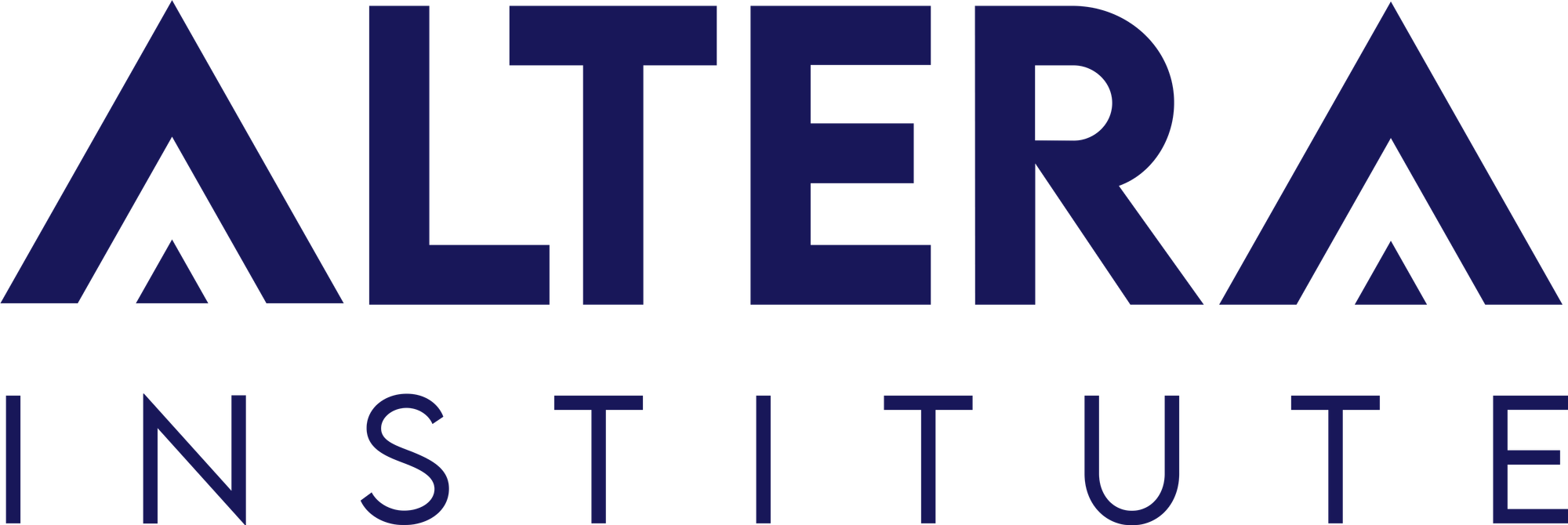D2C vs. B2C: What is the Difference?
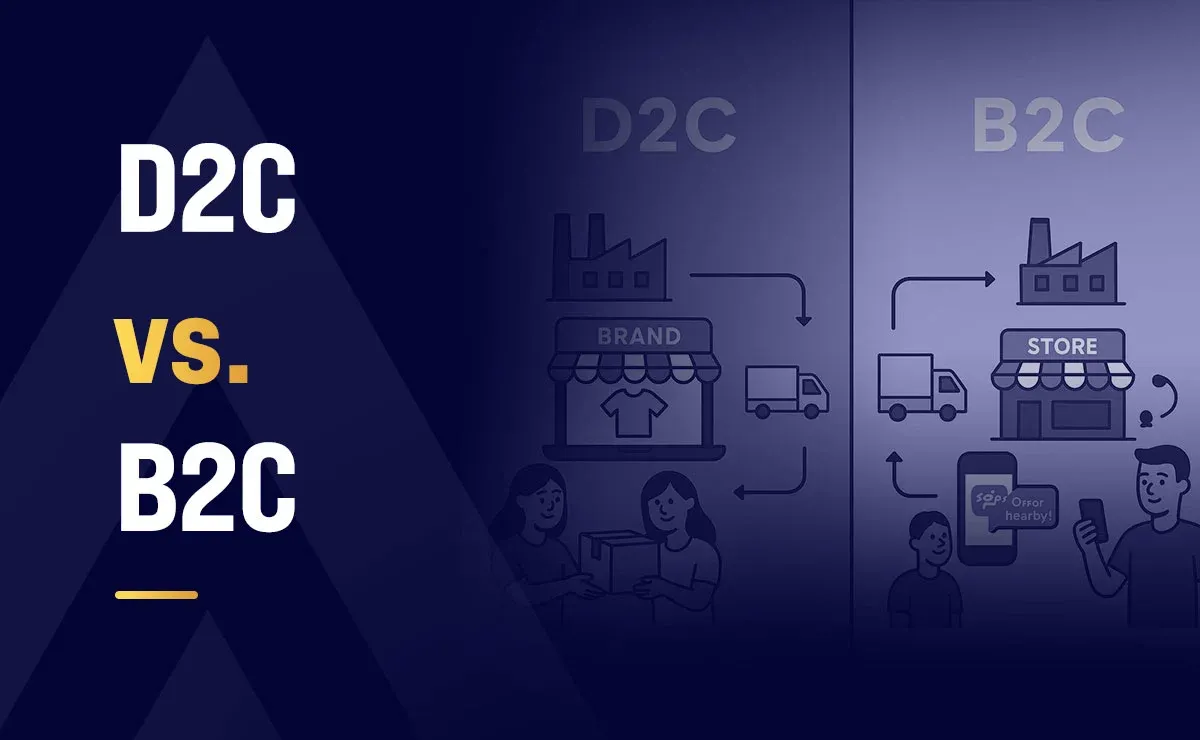
Business sales have undergone significant evolution as a result of the emergence of eCommerce and online platforms. The industry is dominated by two sales models: Business-to-Consumer (B2C) and Direct-to-Consumer (D2C). Although both are placed in end customers, they have different approaches in terms of distribution, brand control, and direct interaction with customers.
For those who envision becoming entrepreneurs, these models provide essential information for a solid business strategy. In this article, the author provides a comprehensive analysis of D2C versus B2C, outlining the associated benefits, issues, and which approach a particular business should use.
What is B2C?
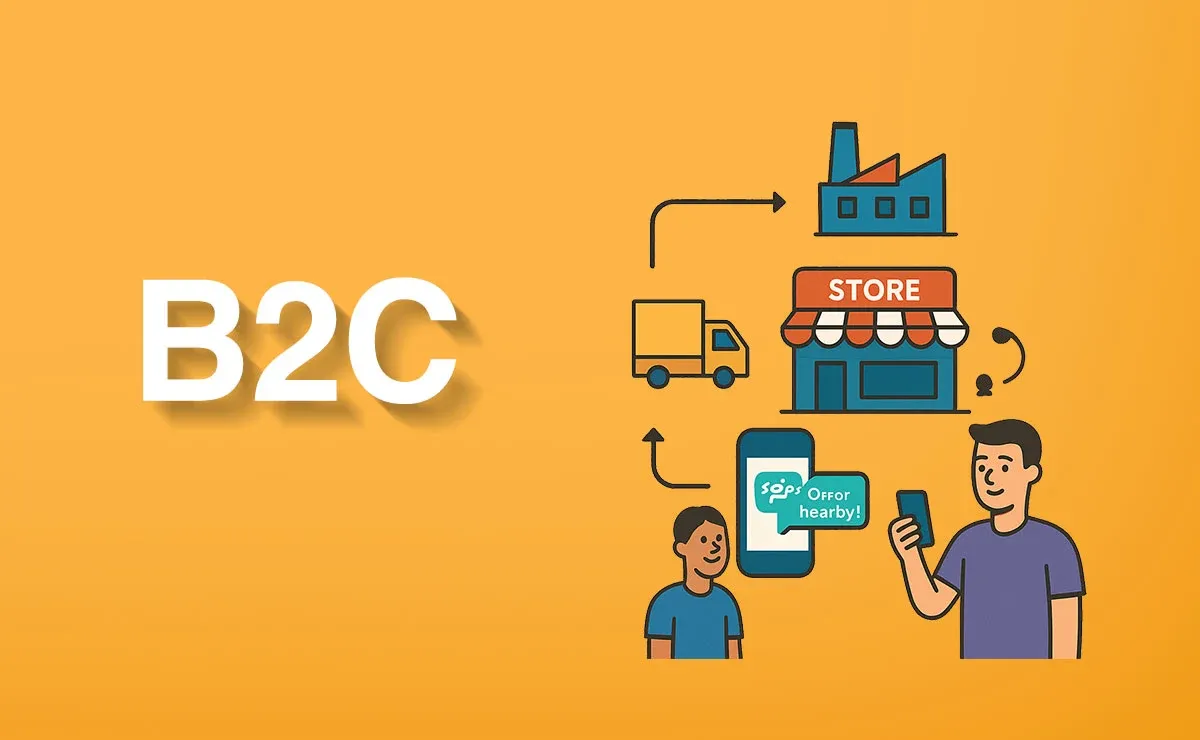
Business-to-consumer (B2C) is a type of commerce in which organizations provide goods and services directly to end-users through various retail channels, including online platforms and physical outlets. The B2C model is extensive, comprising conventional brick-and-mortar shops, eCommerce stores, and online sales through social media.
Key Characteristics of B2C:
- Intermediary-Based Selling: Companies are using third-party retailers or marketplaces.
- Reduced Command of Branding: Companies lack full control over the product market and commercialization.
- Existing Distribution Channels: B2C brands use retail store chains, online stores, and distributors.
- Mass Market Reach: More people have access to the product via the various channels.
- Limited Customer Data: Sellers often lack direct access to insights on customer behavior.
What is D2C?
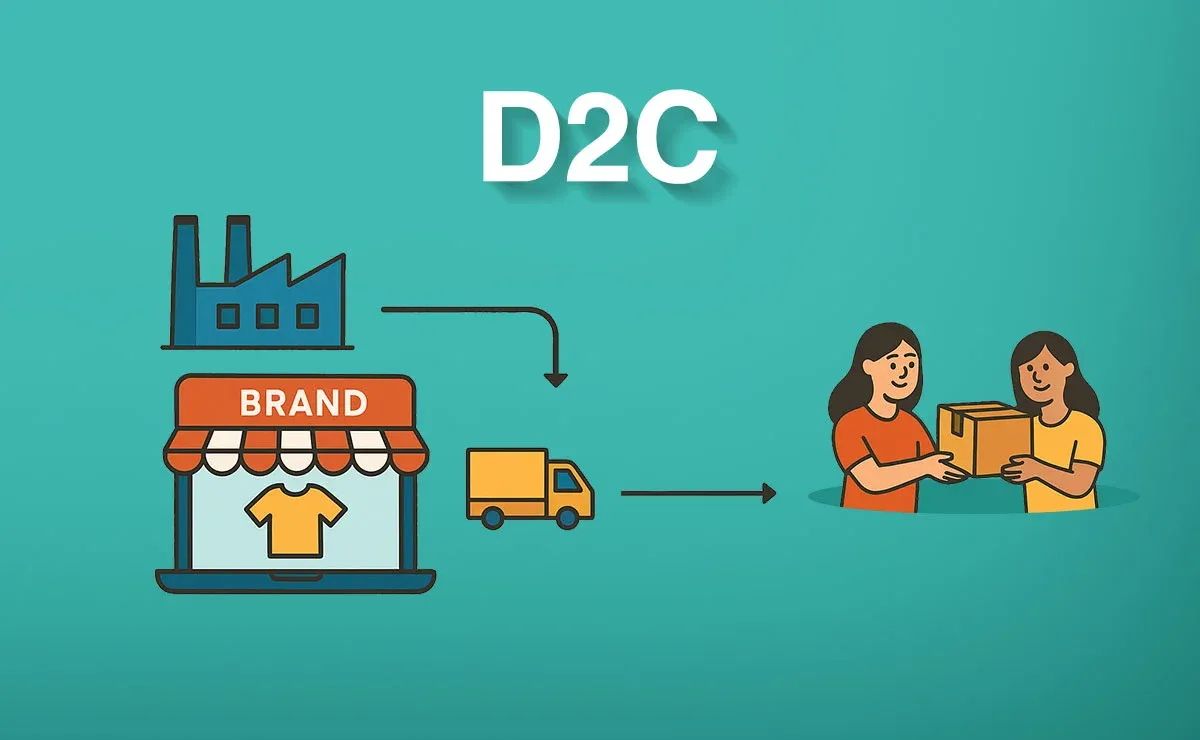
The ideal modern sales approach, known as Direct-to-Consumer (D2C), is one where a company creates direct links with customers, bypassing traditional intermediary channels, and has greater brand control, pricing policies, and direct contact with customers than ever before. D2C brands sell their products through eCommerce platforms, social media, or retail stores.
Key Characteristics of D2C:
- No Middlemen: The company sells its products exclusively through direct channels.
- Greater Brand Control: The company has control over D2C marketing, pricing, and customer experience.
- Increased profit margins: No third-party commissions or fees.
- Improved Customer Data: Data-driven marketing is possible through direct interaction with customers.
- Personalized Marketing: Brands can adjust their advertisements to suit customer behavior.
The Distinction Between B2C and D2C
B2C and D2C systems are both consumer-oriented; yet, they have significant differences in their approach to strategy, workflow, and market performance.
1) Distribution Channels
B2C: It has a wide channel network comprising wholesalers, retail outlets, and multi-channel business sites. Businesses market their products through multiple platforms, including online marketplaces (such as eBay and Amazon), offline outlets, and third-party retailers.
D2C: Has no intermediates and sells directly to customers on brand-owned websites, social media, and pop-up stores. Businesses manage the entire sales cycle, which gives them closer contact with customers.
2) Marketing & Branding Control
B2C: The branding services tend to be shared among retailers, and manufacturers do not have much say in the positioning of the products, price, or advertisement of the products. Marketing strategies are typically based on third-party arrangements and lacks flexibility.
D2C: Brands have strategic control over their marketing story, pricing policies, and communication channels with customers. They will be able to develop more distinctive brand stories, launch focused campaigns, capitalize on social media, alternative connections with influencers, and make direct appeals in a more efficient manner.
3) Data and Customer Insights
B2C: The information of customers is distributed among several sellers and platforms, which complicates the analysis of consumer behavior. Most customer insights are held by retailers or online marketplaces and do not have direct access to customer interests.
D2C: Direct access to first-party customer information, which makes it possible to assess the purchasing behavior, preferences, and feedback. Such data enables us to make informed business decisions and enhance customer experiences.
4) Scalability & Business Growth
B2C: B2C companies can grow rapidly due to numerous retailer relationships, but expansion will be contingent on the retailers' willingness to stock and promote their products. There is a tendency to expand, and, therefore, more distribution efforts are needed.
D2C: To scale in D2C, it is necessary to make direct investment in marketing, logistics, and brand building. It provides a greater degree of freedom in global growth and access to customers.
5) Customization and Personalization
B2C: Minimal customization possibilities because companies use third-party channels to fulfill the products. Customization opportunities are typically standardized and predetermined.
D2C: More personalization and customization choices, including customized product recommendations or customized packaging. Brands can also create unique experiences, such as subscriptions, personalized shopping experiences, and custom product designs.
6) Speed and Flexibility
B2C: Stricter supply chain operations because of intermediaries. Any shift in market trends or consumer demand will also require communication with distributors and retailers, which will lead to a slower response time.
D2C: More agility and responsiveness to market changes. Depending on real-time consumer trends, brands can quickly affect dynamic changes to product portfolios, marketing approaches, and customer engagement tactics.
Pros and cons of B2C
Now we will see the pros and cons of a B2C business model:
Pros:
- Extended Market Reach: Reach a large number of customers via retailers and online marketplaces.
- Reduction in Marketing Costs: Retailers handle their own advertising, which entails cost-cutting measures.
- In-Place Distribution Channels: Leverage available supply chains and logistics channels.
- Retailers Trust: Buyers prefer to use a platform they are familiar with, such as Amazon or Walmart.
Cons:
- Little Brand Control: Third-party sellers are responsible for pricing, promotion, and customer experience.
- Low Profit Margins: Intermediaries have a share of revenue in the form of commissions and fees.
- Absence of Direct Customer Data: Customer insights are held by the retailer, which makes it more challenging to personalize the experience.
- Reduced Adaptability: It takes time to adjust to market changes, and this involves more than just one stakeholder.
Pros and cons of D2C
- Now let’s learn the pros and cons of a D2C business model:
Pros:
- Full Brand Control: The companies have total control over pricing, branding, and customer experience.
- Increased Profit Margins: By removing middlemen, direct revenue is raised.
- Direct Customer Relationships: First-party data gives access to personal marketing and enhances engagement.
- Agility and Flexibility: Rapid response to market trends, products, and customer requests.
Cons:
- Increased Marketing Spending: Marketing requires a significant investment, as brands must allocate resources to niche advertising, digital campaigns, and customer acquisition tactics.
- Complexity of Logistics: The complexity of logistics, including warehousing, shipping, and return management, is a significant operational challenge.
- Weak First to Market: Since there are no pre-established retailer associations, it is more challenging to establish customer visibility initially.
- Customer Hesitation: Customers may be reluctant to purchase products from lesser-known brands directly.
Hybrid Models: Mixing D2C and B2C
Due to changing consumer behaviors, brands are moving towards hybrid models, which involve a combination of D2C and B2C approaches. With this strategy, companies can leverage as much as they can reach and retain control over branding, customer experience, and data insights.
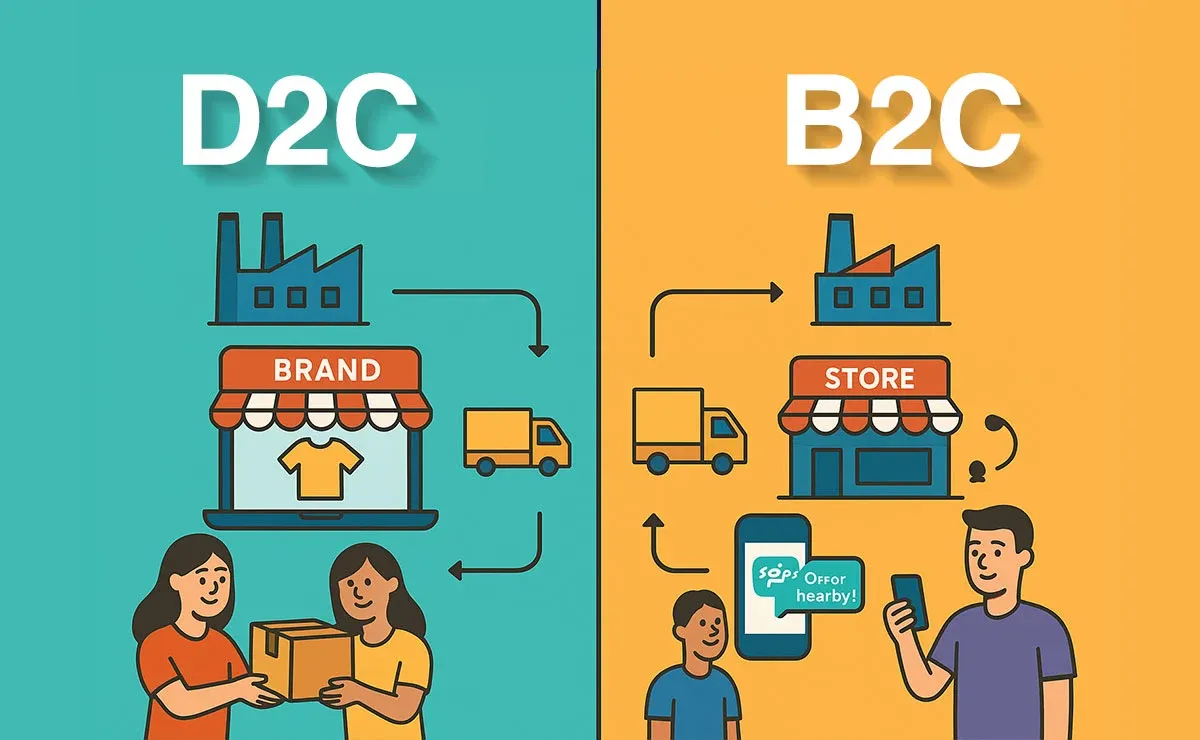
Why Adopt a Hybrid Model?
- Gain Market Access: Retailers (B2C) allow wide distribution, whereas D2C gives an opportunity to contact loyal customers directly.
- Stronger Brand Control: A direct channel enables brands to set pricing, craft unique experiences, and solidify their identity.
- Invaluable Customer Data: The D2C model provides access to first-party data, which can be leveraged to enhance B2C approaches.
- Higher Revenue Streams: Brands can enjoy higher margins even in direct sales and still benefit from the advantages of retail partnerships.
- Strategic Adaptability: A multi-channel strategy enables companies to respond quickly to new market trends and shift consumer preferences.
FAQs
Q1. What is the role of 3PLs for D2C businesses?
Ans: Direct-to-Consumer (D2C) brands rely on third-party logistics (3PL) companies as essential infrastructure coordinators for their entire supply chain, which involves warehousing, order processing, shipping logistics, and the authorization of returned merchandise.
Q2. What are some D2C vs. B2C examples?
Ans: B2C (Business-to-Consumer): A brand selling through third-party retailers. Example: Zomato connects restaurants with consumers for food delivery and dining-out experiences.
D2C (Direct-to-Consumer): A brand selling directly via its own website or stores. Example: the brand Licious delivers fresh, high-quality meat directly to consumers through their app.
Q3. Is Netflix D2C or B2C?
Ans: Netflix operates as a D2C (Direct-to-Consumer) business model because it delivers content directly to users via its platform, bypassing intermediaries like cable providers. But it also has B2B aspects, including licensing its content to other businesses.
Q4. What is the difference between D2C, B2C, and B2B?
Ans: D2C (Direct-to-Consumer): The brands create direct and unmediated buying solutions through direct contact with end consumers. (Example: Boat, Mamaearth, Licious, etc.)
B2C (Business-to-Consumer): Brands market directly to consumers, often through intermediaries such as retailers. (Example: Samsung selling through Best Buy.)
B2B (Business-to-Business): It emphasizes business-to-business dealings and centers on organizational customers, rather than individual consumers. (Example: Microsoft selling software to companies.)
Conclusion
The decision on whether to adopt a B2C or D2C approach rests on brand control, customer reach, and scalability. B2C has an extended distribution network via retailers, whereas D2C has a direct customer relationship and better margins.
It is also a hybrid approach, merging the best of both worlds, that is becoming popular among many successful brands, enabling them to reach as many people as possible while retaining control and data insights. Effective companies must be strategic in how they model their operations to align with market dynamics and the demands of sophisticated consumers.
As eCommerce continues to evolve, brands must remain adaptive to changing consumer behaviors. The optimal approach ultimately depends on a company's unique goals, available resources, and long-term vision for sustainable growth and meaningful customer engagement.
